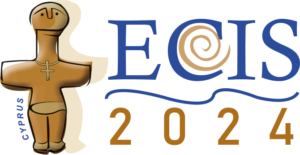Paper Number
1934
Paper Type
Complete Research Paper
Abstract
Users face various information technology (IT) threats in their daily lives. They affect users by evoking emotions such as fear and require them to engage in behaviors such as changing their passwords. While research offers rich insights into how IT threats generally influence users, it does not contrast different types of IT threats that likely influence how they affect users. Drawing on the stimulus-organism-response model, we conducted a literature review on information systems (IS) research on IT threats to identify the different types of IT threats and their influence on users. Findings reveal different types of IT threats, how they influence users’ perceptions, emotions, and behaviors, and the contextual factors that guide these relationships. We contribute to IS research by painting a holistic picture of extant knowledge on IT threats and crafting an agenda for future research.
Recommended Citation
Meier, Marco, "Navigating the Landscape of IT Threats: A Literature Review and the Road Ahead" (2024). ECIS 2024 Proceedings. 11.
https://aisel.aisnet.org/ecis2024/track19_hci/track19_hci/11
Navigating the Landscape of IT Threats: A Literature Review and the Road Ahead
Users face various information technology (IT) threats in their daily lives. They affect users by evoking emotions such as fear and require them to engage in behaviors such as changing their passwords. While research offers rich insights into how IT threats generally influence users, it does not contrast different types of IT threats that likely influence how they affect users. Drawing on the stimulus-organism-response model, we conducted a literature review on information systems (IS) research on IT threats to identify the different types of IT threats and their influence on users. Findings reveal different types of IT threats, how they influence users’ perceptions, emotions, and behaviors, and the contextual factors that guide these relationships. We contribute to IS research by painting a holistic picture of extant knowledge on IT threats and crafting an agenda for future research.
When commenting on articles, please be friendly, welcoming, respectful and abide by the AIS eLibrary Discussion Thread Code of Conduct posted here.


